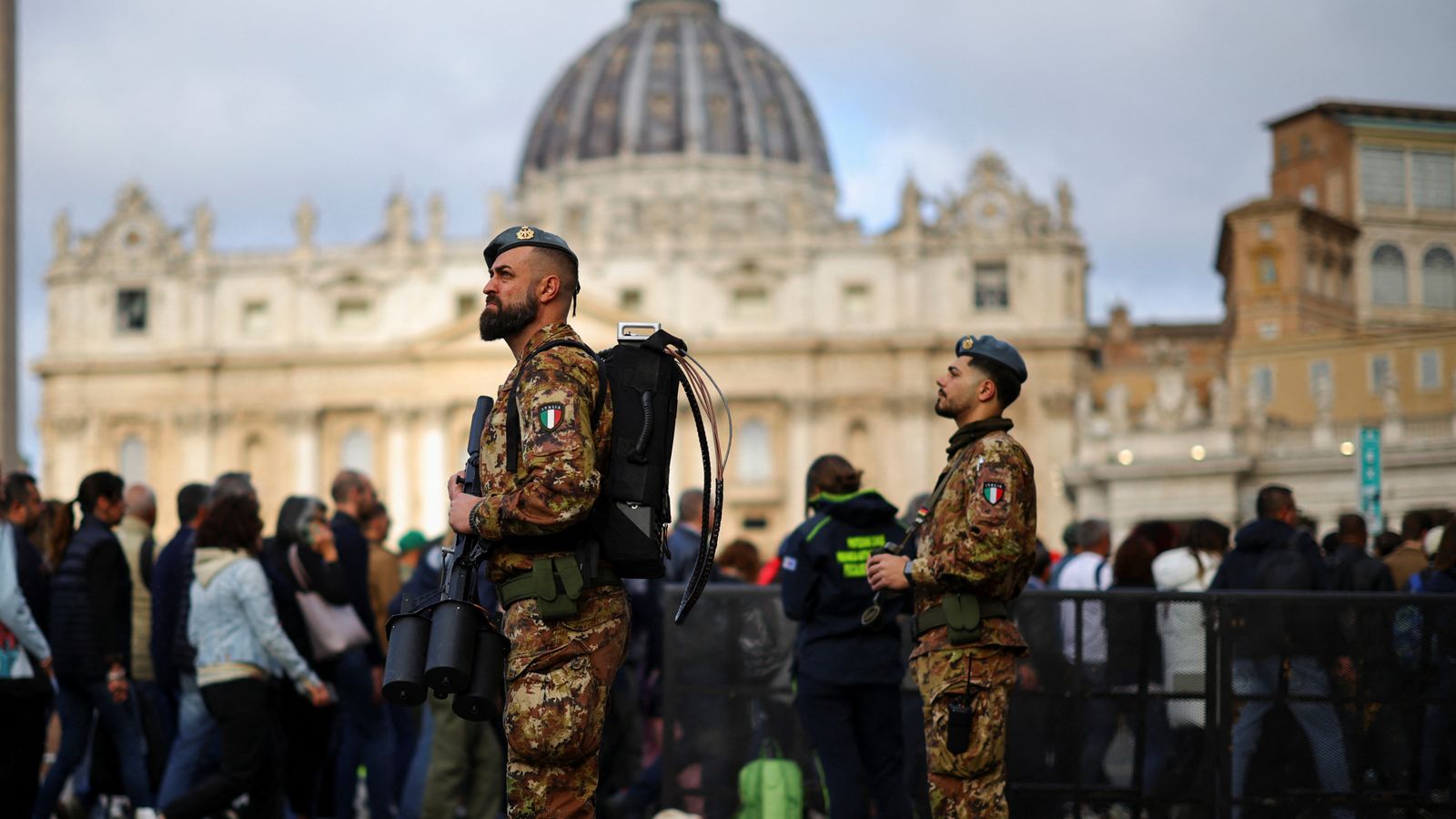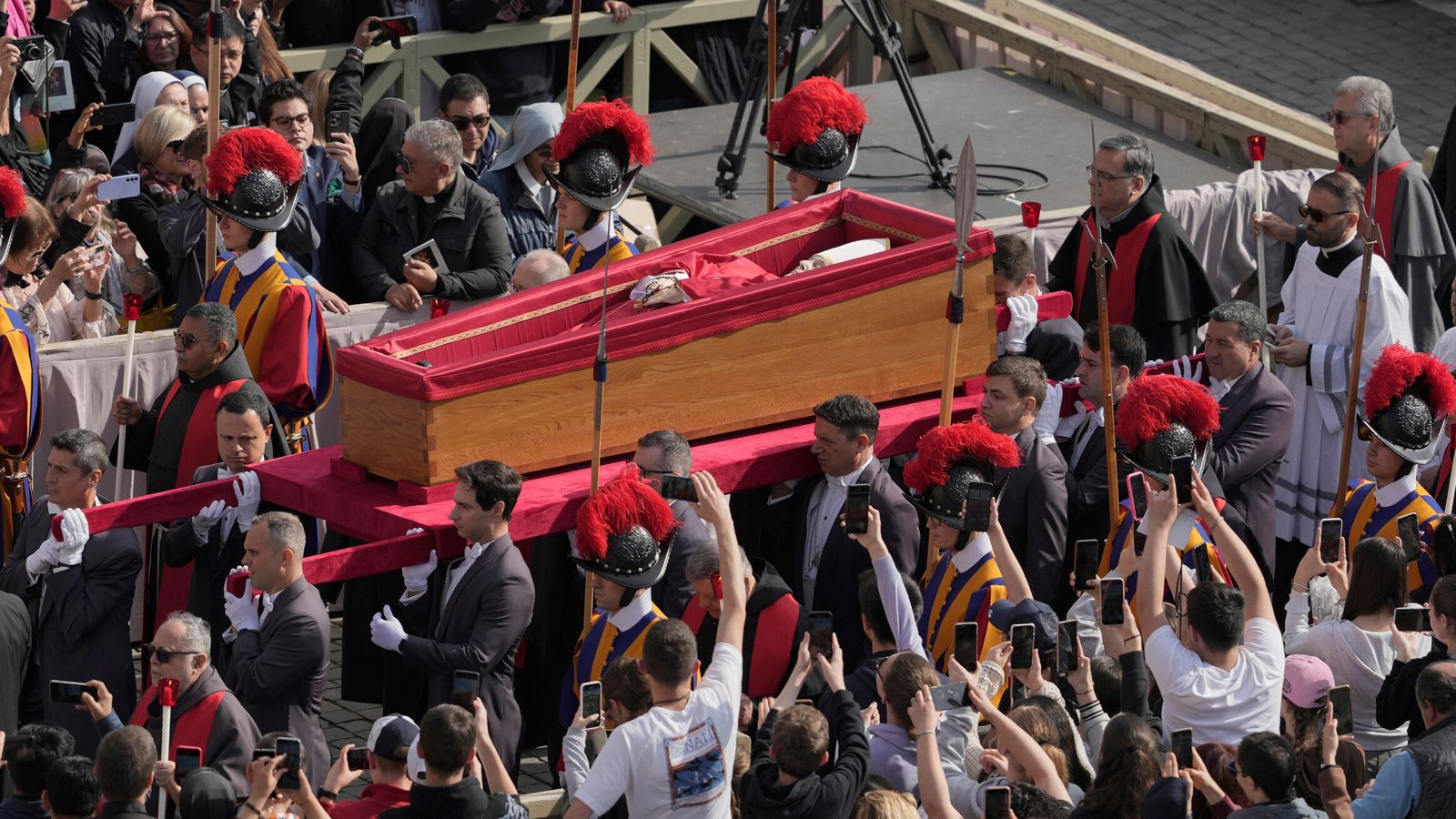Did the world truly understand the depth of Pope Francis's impact? His papacy, marked by humility, compassion, and a relentless focus on the marginalized, left an indelible mark on the Roman Catholic Church and the global stage.
The news, delivered with solemnity, echoed through Vatican City and across the globe: Pope Francis, after a decade of leading the Roman Catholic Church, had passed away. The announcement, made on a Monday morning at Saint Martha House, his residence within Vatican City, signaled the end of an era. The pontiff, aged 88, had lived his final days in the simple confines of the guesthouse, foregoing the traditional papal apartments. His death, occurring on Easter Monday, was confirmed by Cardinal Kevin Farrell, the Camerlengo of the Holy Roman Church, who delivered the news with the profound sorrow that comes with such a loss.
| Category | Details |
|---|---|
| Full Name | Jorge Mario Bergoglio |
| Born | December 17, 1936, Buenos Aires, Argentina |
| Died | April 21, 2025, Vatican City |
| Nationality | Argentine |
| Religious Affiliation | Roman Catholic |
| Papal Name | Francis |
| Pontificate Began | March 13, 2013 |
| Papal Tenure | 12 years |
| Previous Positions | Archbishop of Buenos Aires (19982013), Cardinal (20012013) |
| Known For | Emphasis on social justice, environmentalism, and reform within the Catholic Church |
| Quote | "The joy of the Gospel fills the hearts and lives of all who encounter Jesus." |
| Reference Website | Vatican Website - Pope Francis |
The day of his passing, April 21, 2025, at 7:35 in the morning, marked not just the end of a life but the beginning of a period of transition for the Church. The Vatican entered the "sede vacante" period, the time when the papal seat is empty, pending the election of a new pontiff. This process, steeped in tradition, would involve a conclave, the gathering of cardinals to elect the next leader of the Catholic Church, expected to be held between 15 and 20 days after Francis's death.
Pope Francis's life and papacy were a study in contrasts. He chose a life of simplicity, opting to reside in the Domus Sanctae Marthae, a guesthouse within the Vatican, rather than the more opulent papal apartments in the Apostolic Palace. This choice reflected his commitment to humility and his desire to be closer to the everyday lives of the people he served. Each morning, before dawn, he would awaken, pray, and meditate, before delivering a homily. He greeted employees of the Vatican, and it was said that he never refused a guided visit of the Vatican gardens. These small acts were a reflection of his accessibility and connection to the broader community, a cornerstone of his papacy.
His tenure was marked by significant moments. In 2015, he became the third pope to visit the White House, a visit that underscored his global influence and his ability to engage with world leaders. His meeting with President Obama included a discussion of key issues, including the loss of the President's son, Beau. The White House, in the wake of his death, offered condolences, a sign of the respect and regard he held across different nations.
The Domus Sanctae Marthae, where he spent his final days, stands adjacent to St. Peter's Basilica. This guesthouse, completed in 1996, was built to house cardinals during a conclave, and it was here that Pope Francis chose to live since his election in 2013, a decision that further reinforced his commitment to living a less ostentatious life. His presence in the guesthouse contrasted with the grandeur of the Vatican, highlighting his commitment to simplicity.
The papacy of Pope Francis was a period of significant change and reform. The Catholic Church, under his leadership, addressed issues of social justice, environmentalism, and the rights of the marginalized. He made bold statements regarding immigration enforcement, leading to international discussions. He championed interfaith dialogue and sought to bridge divides. These positions were often met with both support and criticism, but they underscored his commitment to his core values and his vision for the Church.
Throughout history, the papacy has seen various residences. From the Lateran Palace to the Apostolic Palace, the location of the Popes residence has often been a symbol of the power and influence of the Church. Pope Symmachus built a papal palace near the old St. Peter's Basilica in the 5th century, as an alternative residence. The construction of a second fortified palace was sponsored by Pope Eugene III and extensively modified under Pope Innocent III in the twelfth century. Pope Francis, however, chose a different path, symbolizing a shift in the perception of the papacy. The decision to reside in Casa Santa Marta, rather than in the grander papal apartments, was a powerful statement about his priorities and values.
In his final days, Pope Francis was admitted to Rome's Gemelli Hospital, a hospital that has been associated with the papacy for decades. He was treated for bronchitis, an illness that marked the closing stages of his life. Yet, even in these moments, his commitment to his duties never wavered. He continued to meet with people, offer blessings, and lead by example. His final moments in the guesthouse were a poignant reminder of his dedication to service and his devotion to the Church.
The death of Pope Francis is a pivotal moment in the history of the Catholic Church. His legacy extends far beyond his time as pontiff, shaping the direction of the Church for years to come. His dedication to the poor, his focus on social justice, and his embrace of humility have inspired millions. The process of electing a new pope is underway, and the next pontiff will undoubtedly face the challenge of building upon the foundations laid by Pope Francis. His impact on the world will continue to be felt for generations to come.
The Vatican website provides comprehensive resources for those seeking to learn more about Pope Francis and his papacy. One can browse the magisterium of the supreme pontiffs, from Pope Leo XIII to Pope Francis, find the fundamental texts of Catholicism in various languages, and explore the documents of dicasteries, bodies, and institutions of the Roman Curia. This rich archive will allow the faithful and scholars alike to delve deeply into his teachings and the issues he addressed during his time as the leader of the Catholic Church. The influence of Pope Francis extended beyond the confines of the church and reached into the broader realms of the globe.
The announcement of his passing came from the Camerlengo, Cardinal Kevin Farrell, who delivered the news with the same words as his predecessors. These words, echoing through the world, marked the passing of an era. The weight of this announcement, and the sadness it contained, are part of the story of Pope Francis. It's not only the end of a life but the close of the era. The world now waits with anticipation for the selection of the next leader of the Catholic Church, someone who will carry the legacy of Pope Francis forward. The influence of this Pope will continue to be felt. The memory of his works and faith is the mark of the life of Pope Francis.


